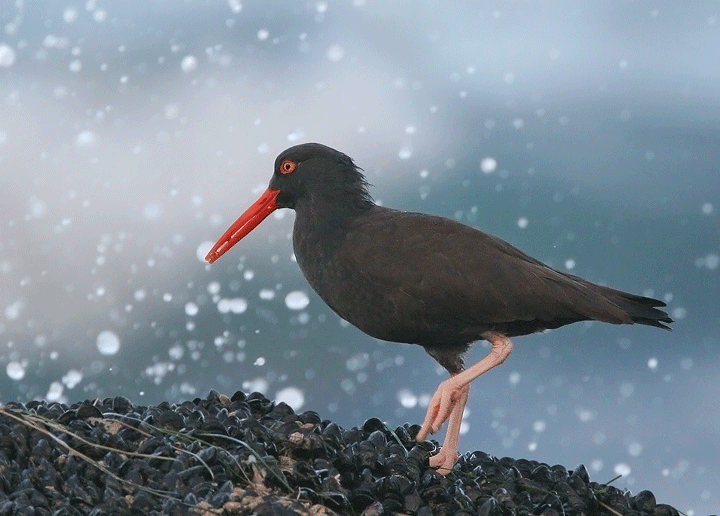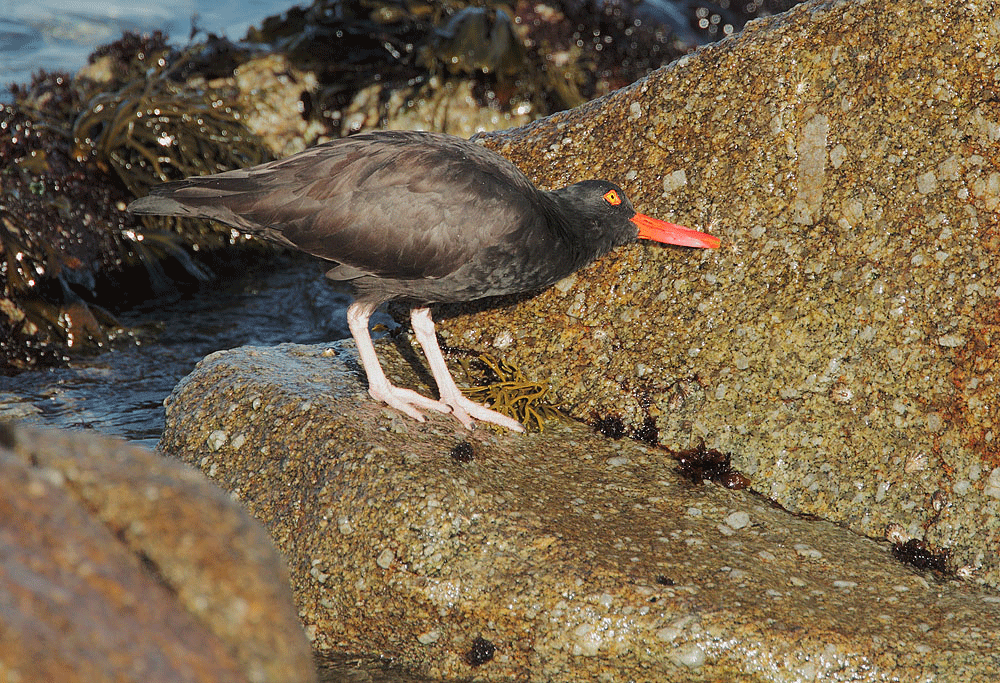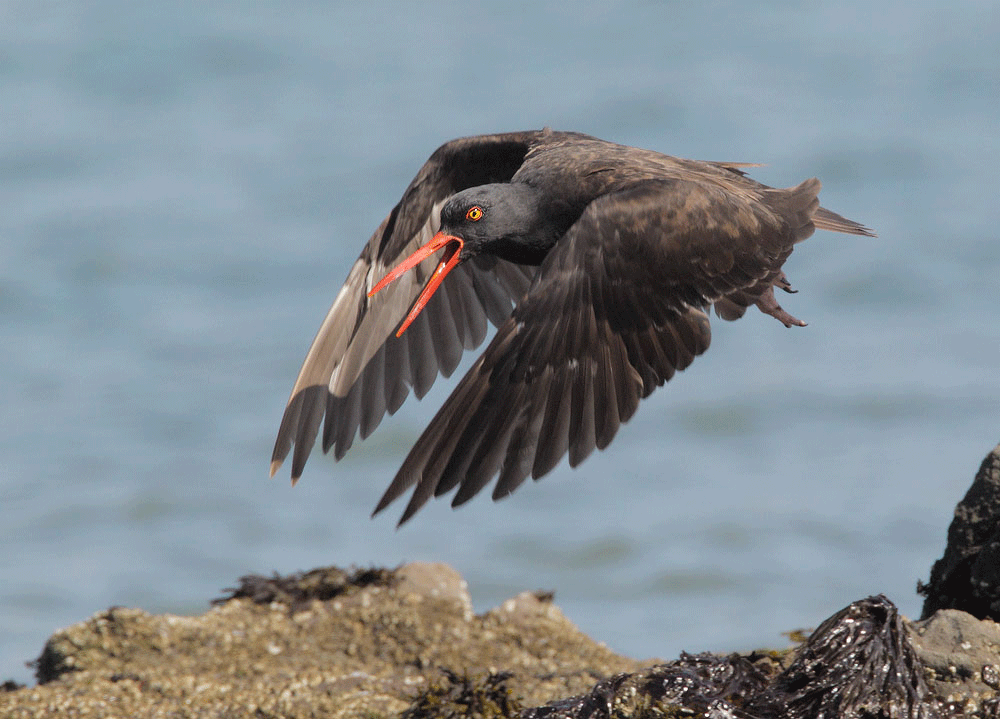BirdNote® Oystercatcher
Air Date: Week of November 2, 2012

A black oystercatcher at water’s edge. (Photo: © Tom Grey)
The ocean battered the East Coast this past week, but for the Black Oystercatcher the seashore is a protective habitat. BirdNote’s Michael Stein reports.
Transcript
CURWOOD: We've recently had a lesson in the sea's power, but as BirdNote®'s Michael Stein explains - for some birds, despite the ocean's occasional destruction, the seashore is a protective habitat.
[PIPING CALL OF THE BLACK OYSTERCATCHER, HEARD OVER WAVES ON ROCKY SHORELINE]

A black oystercatcher harvesting a limpet. (Photo: © Tom Grey)
STEIN: We’re crouching on a rocky shoreline on the Pacific Coast – hearing the piping call of the Black Oystercatcher, a stocky black bird with bright red eyes and a stout, orange-red bill perfectly suited for jabbing limpets and mussels. Let’s listen again.
[CALL OF THE BLACK OYSTERCATCHER]
STEIN: A strong ebb tide is flowing, creating whirlpools and tugging at the kelp. On nearby rocks, harbor seals, looking like huge, taut sausages, have hauled out to rest. If we’re lucky today, we’ll hear some snorting!
[HARBOR SEAL SNORTING]

A black oystercatcher coming in for a landing. (Photo: © Tom Grey)
STEIN: The oystercatcher is completely dependent on this marine shoreline for nesting and food, even in winter, when waves hit these rocks with awesome force. Yet what seems like an inhospitable environment to us must offer some advantages to the oystercatcher.
For one, wave-splashed mussels, the bird’s chief food, open more often, making them easier to attack and eat. For another, when the monogamous Black Oystercatcher nests on ledges just off shore, its eggs and young suffer far less predation by mammals. Now that’s something to celebrate!
[CALL OF THE BLACK OYSTERCATCHER ]
SETIN: P.S. Contrary to their name, oystercatchers rarely eat oysters. I’m Michael Stein.
CURWOOD: There are pictures of Black Oystercatchers over at our web-site, loe dot org.
(Call of the Black Oystercatcher [2918] provided by The Macaulay Library of Natural Sounds at the Cornell Lab of Ornithology, Ithaca, New York. Recorded by A.A. Allen. Waves recorded by J.R. Storm
Producer: John Kessler. Executive Producer: Chris Peterson.All rights reserved)
Links
Living on Earth wants to hear from you!
Living on Earth
62 Calef Highway, Suite 212
Lee, NH 03861
Telephone: 617-287-4121
E-mail: comments@loe.org
Newsletter [Click here]
Donate to Living on Earth!
Living on Earth is an independent media program and relies entirely on contributions from listeners and institutions supporting public service. Please donate now to preserve an independent environmental voice.
NewsletterLiving on Earth offers a weekly delivery of the show's rundown to your mailbox. Sign up for our newsletter today!
 Sailors For The Sea: Be the change you want to sea.
Sailors For The Sea: Be the change you want to sea.
 The Grantham Foundation for the Protection of the Environment: Committed to protecting and improving the health of the global environment.
The Grantham Foundation for the Protection of the Environment: Committed to protecting and improving the health of the global environment.
 Contribute to Living on Earth and receive, as our gift to you, an archival print of one of Mark Seth Lender's extraordinary wildlife photographs. Follow the link to see Mark's current collection of photographs.
Contribute to Living on Earth and receive, as our gift to you, an archival print of one of Mark Seth Lender's extraordinary wildlife photographs. Follow the link to see Mark's current collection of photographs.
 Buy a signed copy of Mark Seth Lender's book Smeagull the Seagull & support Living on Earth
Buy a signed copy of Mark Seth Lender's book Smeagull the Seagull & support Living on Earth

